
In Costa Rica, we have two coasts, a pair of shorelines that touch two oceans. To the west and south, we have the Pacific, go east and north and a birder scans the Atlantic. However, in Costa Rica, we don’t usually refer to that body of water as the Atlantic, nor even as an ocean. Around here, it’s the Caribbean Sea and that’s also why we bird the Caribbean slope, we look for macaws, toucans, and Great Potoos in the Caribbean lowlands.
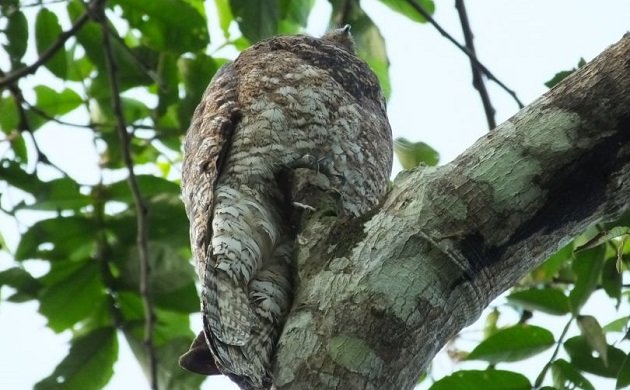
The Great Potoo is a big, blocky-headed bunch of feathers.
The flat, low-lying areas of northern and eastern Costa Rica harbor some of the highest biodiversity in an already mega-diverse country. It’s a lucky day when a birder can visit this exciting region because such a wide variety of species are possible, especially so in sites like Cano Negro that blend wetlands with rainforest. I was recently reminded of the rich avifauna found in the Caribbean lowlands while guiding a small group of birders from Texas. In a couple days, we probably identified around 185, maybe even 190 species. Many of the birds were beautiful, exciting tropical bird species, some, I dare say, downright cool. The label is certainly subjective but at the risk of going against the Zen grain of birding, some birds just seem cooler than others. In addition to the Great Potoo, these Caribbean lowland species earn my vote to place them at the cooler end of the birding spectrum:
Green Ibis
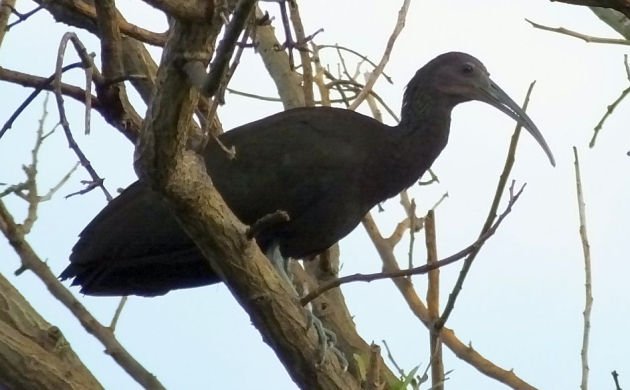
Although sightings of this vulterine waterbird have increased on the Pacific slope, for the most part, in Costa Rica, the Green Ibis is still a bird of the Caribbean lowlands. Watch for birds masquerading as Black Vultures along rivers, in swampy rainforest, and wetlands near forest. They also get points for making raucous, rollicking calls at dusk and dawn.
Tiny Hawk
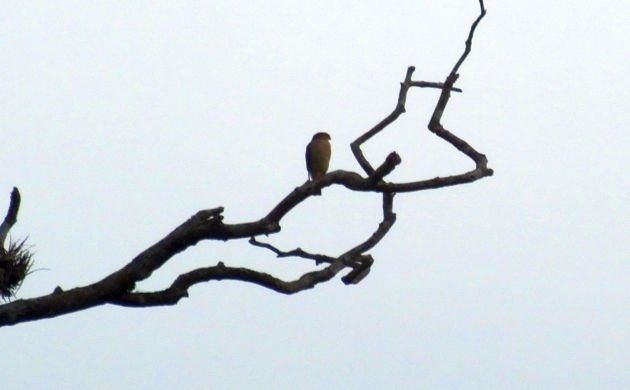
A hawk that’s too small? Ha, what could it prey on, bugs? If only. This robin sized raptor is lethal, especially for hummingbirds and even tanagers. I saw one clutching a Scarlet-rumped Tanager, a bird of nearly the same size, I don’t know how it carried it away. What makes the Tiny Hawk even more dangerous is its penchant to ambush small birds in clearings. Just when a manakin feels safe it has to deal with the possibility of being killed by a pint-sized, voracious thing with needle-sharp talons. This one is a real prize to see, look for it perched high in a tree in the early morning, or zipping through a forest gap in search of unwary birds.
Great Green Macaw

Huge. Spectacular. Endangered. Often seen at the right sites. How could this amazing bird not be cool! Even better, many now feed on Beach Almonds, a tree planted in many areas for shade. This makes it easy to see this mega at Tortuguero and various other sites in the Caribbean lowlands.
Crested Owl
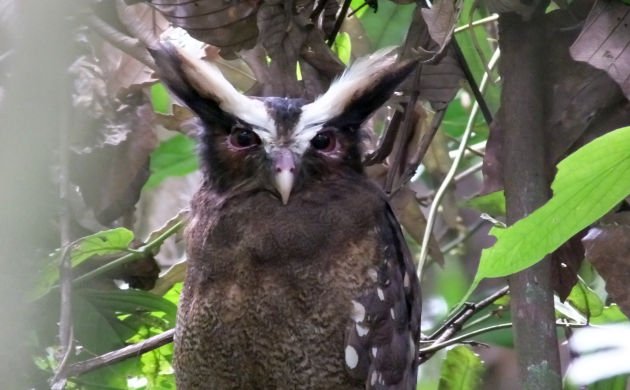
Since all owls are automatically cool, I wouldn’t say that this is the coolest. No, I won’t go that far but I will say that it’s an excellent rep. for its kind. This species is actually fairly common in areas with rainforest. Listen for its gruff call at night, keep an eye out for it during the day. It likes to roost in lower parts of the forest where there are large, hanging dead leaves.
Toucans
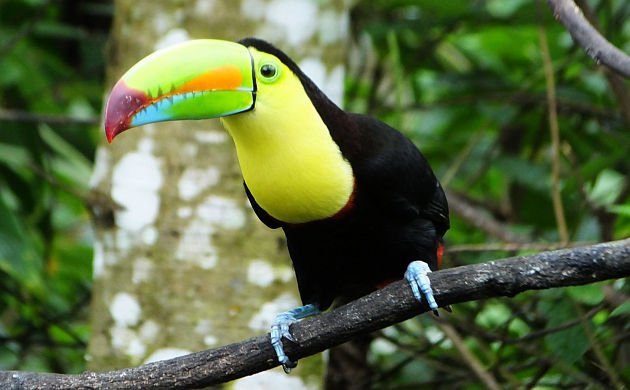
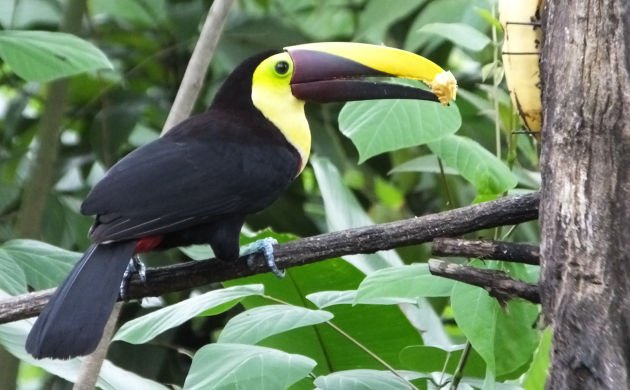
Immortalized by a cereal box, these birds are real and larger than life. Big, colorful, smart, and vocal, seeing toucans is wonderful. In some places, they even come to fruit feeders and are fairly common in the Caribbean lowlands.
Chestnut-colored Woodpecker
Several species of woodpeckers occur in this birdy part of Costa Rica. Most are handsome beasts, a few will knock your birding socks off. One of those few is the Chestnut-colored Woodpecker.
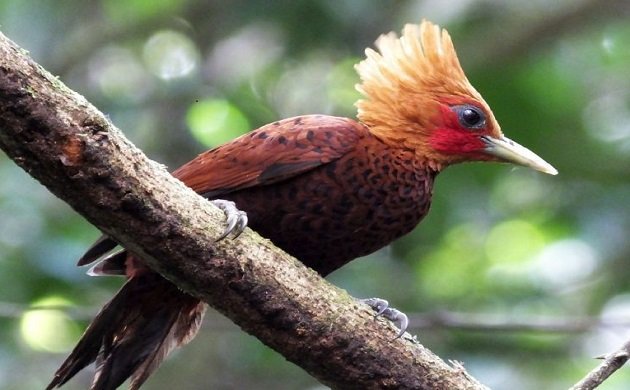
As with other Celeus genus woodpeckers, this one has beautiful rufous plumage. Much to our delight, it also has a bronze-copper, crested head and can forage quite low!
Broad-billed Motmot
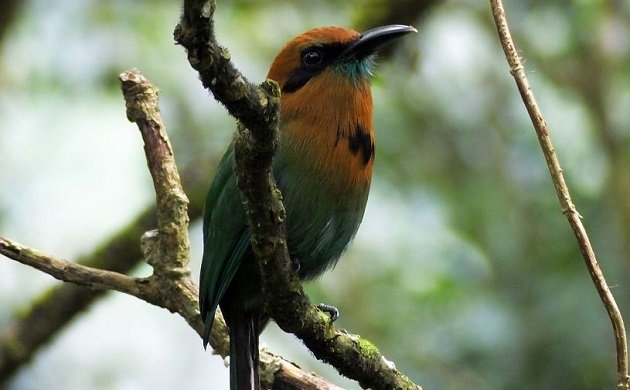
If you are birding in the Caribbean lowlands and hear something that sounds kind of like an old train whistle (sort of), it’s probably a Broad-billed Motmot. This most common motmot of the Caribbean lowlands is one of those exotic avian beauties a birder just has to see. Luckily, it’s pretty common and even occurs in old second growth!
White-fronted Nunbird
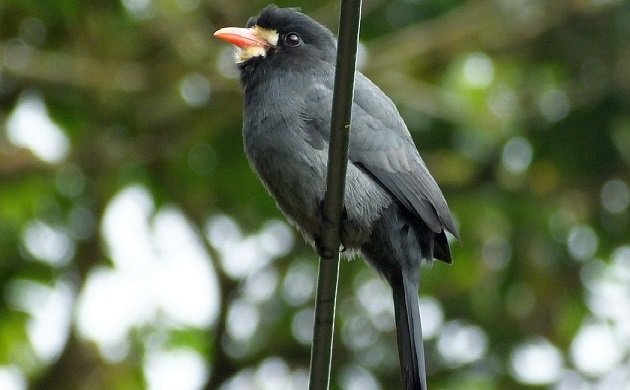
Yet another exotic, cool species, this one is much less common. A true denizen of mature rainforest, the White-fronted Nunbird is large and in charge. Small groups of this eye-catching bird range through the canopy of high quality forest, sometimes in accompaniment of other species.
Ocellated Antbird
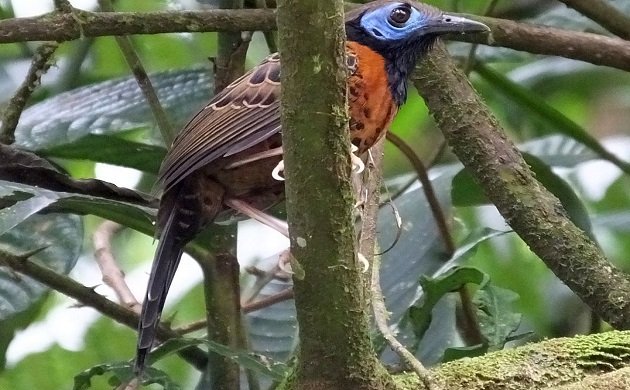
This most fancy of Central American antbirds is quite the cool catch. Although it can be hard to find, when an antswarm is encountered in rainforest, this species is usually present.
Purple-throated Fruitcrow
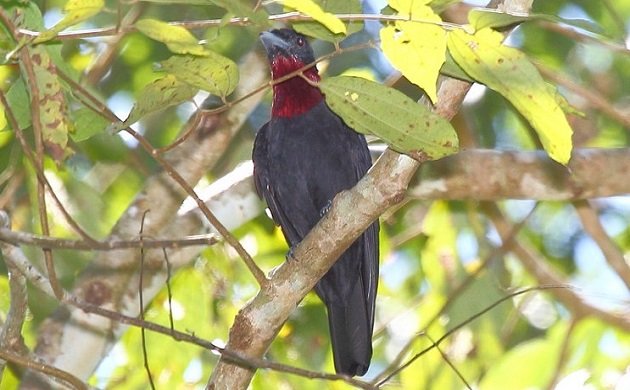
The tenth cool bird on this list is this wild cotinga. Around the same size as a small crow, this species moves through the canopy with quick, swooping flight, and shivers its tail upon landing. It also gives, frequent, distinctive calls.
This list of cool birds is of course far from complete. When it comes down to it, with 400 something species to choose from, there’s just never enough time nor room to list all of the cool birds from this part of Costa Rica. What about the subtle yet cool Plain-colored Tanager? The persnickety Yellow Tyrannulet? Those tinamous that haunt the humid understory with their minor key whistled songs. Of course, the best way to decide which bird might be cooler than another is by seeing them with your own binos. Come on down, the Caribbean lowlands of Costa Rica are closer than you think.
“Purple-throated Fruitcrow (Querula purpurata)” byDominic Sherony is licensed under CC BY-SA 2.0













See one Great Green for me on St. Patrick’s Day 🙂
They seemed to be much scarcer that Scarlets?
@Dragan- Thanks, although I did not see a Great Green, I did have some close looks at Green Honeycreeper. Yes, much scarcer than Scarlets,